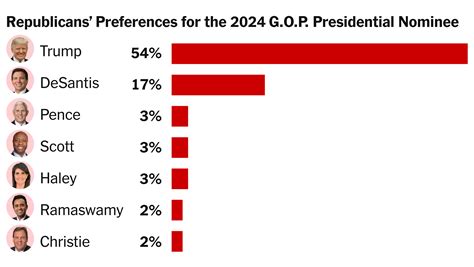Explore cricket’s global appeal, evolution, media impact, major tournaments, youth engagement, and economic contributions to the sports industry worldwide.Cricket, often dubbed as a religion in many nations, transcends geographical boundaries and unites diverse cultures through its exhilarating gameplay and rich history. From the lively streets of India to the serene fields in England, the sport has evolved into a global phenomenon that captivates millions. This article delves into the reasons behind cricket’s widespread appeal, exploring its journey from a local pastime to an international spectacle. We’ll examine how comprehensive media coverage and major tournaments have bolstered its popularity while also looking at the economic contributions of the sport and efforts to engage the youth, ensuring cricket’s legacy endures. Join us as we uncover the layers of cricket’s global significance beyond the pitch!
Understanding The Global Appeal Of Cricket Across Cultures
Cricket’s global appeal transcends geographical boundaries and cultural differences, making it one of the most captivating sports worldwide. At the heart of its popularity is the unique blend of tradition, community, and competition that resonates with fans from diverse backgrounds.
One of the defining aspects of cricket is its ability to bring people together, fostering a sense of community and belonging among fans. For many, cricket is more than just a sport; it is a shared experience that unites families and friends during matches, creating bonds that last a lifetime. From bustling streets in India to serene parks in England, cricket matches often serve as social gatherings that highlight the sport’s cultural significance.
Moreover, the global appeal of cricket is evidenced by its rich history and evolution across different cultures. Various nations have developed their own unique styles and forms of play, integrating local traditions into the sport. For instance, the passion seen in Asian subcontinent nations contrasts with the more restrained yet sophisticated approach in England and Australia. This diversity adds depth to the sport and attracts a varied audience, each with its own stories and connections to cricket.
The accessibility of cricket also plays a crucial role in its international charm. The game can be played in any open space, from backyards and streets to grand stadiums, making it an inviting sport for people of all backgrounds. Additionally, cricket’s grassroots initiatives encourage participation among youth, ensuring that the sport continues to grow and thrive across cultures.
In a rapidly globalizing world, cricket’s ability to adapt and resonate with different cultures further cements its status as a beloved sport. As international tournaments bring nations together, the sense of competition blends with respect for diverse cricketing traditions, showcasing the sport as a universal language that bridges gaps between people.
Overall, the global appeal of cricket lies in its rich tapestry woven from culture, community, and celebration, making it an enduring phenomenon cherished by millions around the world.
The Evolution Of Cricket: From Local Sport To International Phenomenon
Cricket has undergone an extraordinary transformation since its humble beginnings as a local pastime in England. Emerging in the late 16th century, the sport started in small village teams where matches were played with makeshift equipment. As the 18th century progressed, it caught the attention of the aristocracy, evolving into a more structured sport, a significant step towards the global appeal of cricket.
By the time the 19th century arrived, organized leagues and county championships began to take shape, which helped to formalize the rules and regulations of the game. The introduction of the Victorian cricket culture promoted the sport widely, and international matches began emerging by the decade, further solidifying cricket’s reputation.
However, it was the establishment of the International Cricket Council (ICC) in 1909 that marked a pivotal moment in the sport’s journey to becoming a global phenomenon. The inclusion of different nations in the competition led to the first-ever Test match between Australia and England, laying the groundwork for the modern format of international cricket.
| Year | Milestone |
|---|---|
| 1590s | Cricket emerges in England as a local sport |
| 1830s | Formalized rules and county championships established |
| 1909 | Formation of the ICC and first Test match played |
| 1975 | Introduction of One Day Internationals (ODIs) and the first Cricket World Cup |
| 2000s | Rise of T20 cricket and global franchises |
The introduction of limited-overs formats, particularly One Day Internationals (ODIs) and T20 cricket, emerged as game-changers, drawing in massive audiences and creating a more dynamic viewing experience. These formats have allowed cricket to broaden its appeal, not just in cricket-loving nations, but also in regions where traditional forms of the sport might not have previously existed.
The rapid growth of media coverage and the advent of digital technology have further propelled the game into the international spotlight, enhancing its global appeal of cricket by reaching new audiences in diverse geographical regions. In turn, cricket has become a symbol of cultural unity, transcending borders and building connections between nations.
How Media Coverage Amplifies Cricket’s Global Reach
Media coverage plays a crucial role in expanding the global appeal of cricket, transforming it from a local pastime into a worldwide sensation. With the advent of satellite television, digital streaming platforms, and social media, fans across the globe can now access live matches, highlights, and exclusive content in real-time.
One of the most significant developments in media coverage is the rise of 24-hour sports networks. These platforms offer extensive programming dedicated to cricket, allowing for in-depth analysis, interviews with players, and behind-the-scenes features. This comprehensive coverage not only informs existing fans but also attracts new audiences by showcasing the thrilling aspects of the game.
The influence of social media cannot be overstated either. Platforms such as Twitter, Instagram, and Facebook provide fans with immediate updates, live commentary, and interactive content. They also enable players and teams to engage directly with fans, fostering a sense of community and loyalty. Viral moments from matches, shared widely on these platforms, can exponentially increase interest in the sport.
Moreover, international broadcasting agreements enable major cricket tournaments to reach diverse audiences. The inclusion of local broadcast networks ensures that matches are accessible, regardless of geographic location, further enhancing the global appeal of cricket. This accessibility is especially vital in countries where cricket is less traditional, effectively introducing the sport to new cultures and demographics.
The links between media coverage and the global appeal of cricket are profound and multifaceted. As more viewers are introduced to the game, awareness and appreciation grow, making cricket a truly global sport.
The Role Of Major Tournaments In Enhancing Cricket’s Popularity
Major tournaments play a pivotal role in the global appeal of cricket, serving as a platform where fans from diverse backgrounds come together to celebrate the sport. Events like the ICC Cricket World Cup, T20 World Cup, and regional tournaments foster a sense of unity and excitement, drawing attention from millions of viewers worldwide.
These tournaments not only showcase the best cricketing talent but also stimulate interest in the sport across different nations. The competitive nature of these events elevates the level of play, making it engaging for audiences, which in turn cultivates a larger, dedicated fan base. Countries with traditionally less exposure to cricket often find newfound interest during these tournaments, leading to grassroots development.
Furthermore, the atmosphere during these competitions encourages television viewership and social media engagement, amplifying discussions about the sport and its athletes. This heightened visibility contributes significantly to the global appeal of cricket, as fans share their experiences and predictions across platforms, thus attracting new followers.
Major cricket tournaments are essential catalysts in increasing the sport’s popularity and engagement worldwide, turning cricket into a global phenomenon that resonates with audiences beyond national borders.
Youth Engagement: Building Future Fans For Cricket Worldwide
Engaging the youth is essential for ensuring the global appeal of cricket continues to grow. With a massive digital landscape and an abundance of entertainment choices, cricket needs innovative strategies to capture the attention of younger generations.
One of the most effective ways to engage young fans is through grassroots programs and school initiatives. Many cricket boards around the world are investing in local clubs and schools, introducing structured coaching programs and competitions that encourage participation. These grassroots efforts not only teach children the fundamentals of the game but also instill a sense of community and belonging.
Additionally, leveraging social media platforms and digital content is crucial in reaching younger audiences. By creating interactive content, such as challenges, tutorials, and engaging videos that showcase the excitement of cricket, organizations can connect with youth in a format they are already comfortable with. Live-streaming matches and engaging fans with behind-the-scenes footage can further enhance this connection.
Moreover, partnering with popular influencers and celebrities in the sports and entertainment industries can help cricket penetrate markets that may not traditionally follow the game. Collaborations with well-known figures can spark interest and provide relatable touchpoints for youth who may be unfamiliar with cricket.
Initiatives such as youth leagues or programs specifically designed for age groups can create a pathway to professional cricket. By fostering a sense of achievement and providing opportunities for advancement, young fans are more likely to develop a lasting passion for the sport, contributing to cricket’s global appeal in the future.
The Economic Impact: Cricket’s Contribution To Global Sports Industries
The global appeal of cricket extends beyond mere fan engagement; it significantly influences the economic landscape of various countries and the sports industry as a whole. Cricket, particularly in regions like South Asia, Australia, and England, generates substantial revenue through multiple channels.
One of the most notable impacts is seen through broadcasting rights. Major cricket tournaments such as the ICC Cricket World Cup and T20 leagues attract millions of viewers worldwide. This large audience translates into lucrative broadcasting deals that contribute billions to the sports economy.
Sponsorship is another vital aspect. Global brands invest heavily in cricket as a means to connect with diverse audiences. This sponsorship not only provides financial backing to teams and leagues but also boosts the visibility of the brands significantly. The valuation of team franchises and leagues continues to rise, demonstrating the global appeal of cricket in attracting corporate giants.
Cricket also plays a crucial role in job creation. From administrative roles in cricket boards to on-ground positions for event management during tournaments, thousands of jobs are created, which in turn supports local economies. Moreover, fan engagement through merchandise sales further adds to the financial ecosystem surrounding the sport.
International tours and matches contribute to local tourism and hospitality industries. Fans traveling to watch their teams play inject significant cash flow into host cities, benefiting hotels, restaurants, and local businesses. This ripple effect reinforces cricket’s status as a sport that not only entertains but also fosters economic growth on a global scale.
Frequently Asked Questions
What makes cricket a global sport?
Cricket’s global appeal stems from its rich history, diverse formats, and the passionate fan base it has cultivated across continents, particularly in countries like India, Australia, England, and South Africa.
How has cricket’s popularity evolved over the years?
Cricket’s popularity has evolved due to the introduction of shorter formats like T20, increased television coverage, and the advent of social media, making it more accessible and engaging for fans around the world.
What role does the ICC play in promoting cricket internationally?
The International Cricket Council (ICC) plays a crucial role by organizing major tournaments like the Cricket World Cup, promoting cricketing events, and supporting the development of the sport in non-traditional cricketing countries.
How does cricket contribute to cultural exchange?
Cricket promotes cultural exchange by bringing together players and fans from different backgrounds, fostering friendships and understanding through shared experiences in the sport.
In what ways does cricket impact local economies?
Cricket positively impacts local economies through tourism, job creation, and increased spending during major tournaments, which benefits hospitality and related industries.
Why is cricket considered a unifying force in some countries?
In many countries, cricket serves as a unifying force by transcending social, economic, and regional divides, bringing people together to celebrate their national teams and shared identity.
What are the challenges facing cricket’s global expansion?
Challenges include the need for better infrastructure in emerging cricket nations, competition with other sports for attention, and the necessity to adapt to changing viewer preferences, especially among younger audiences.








